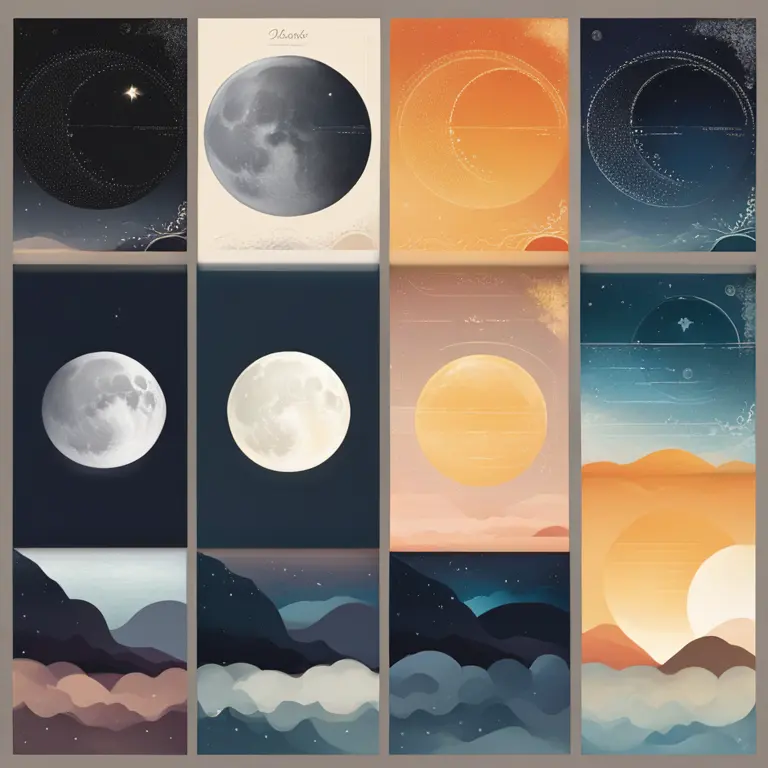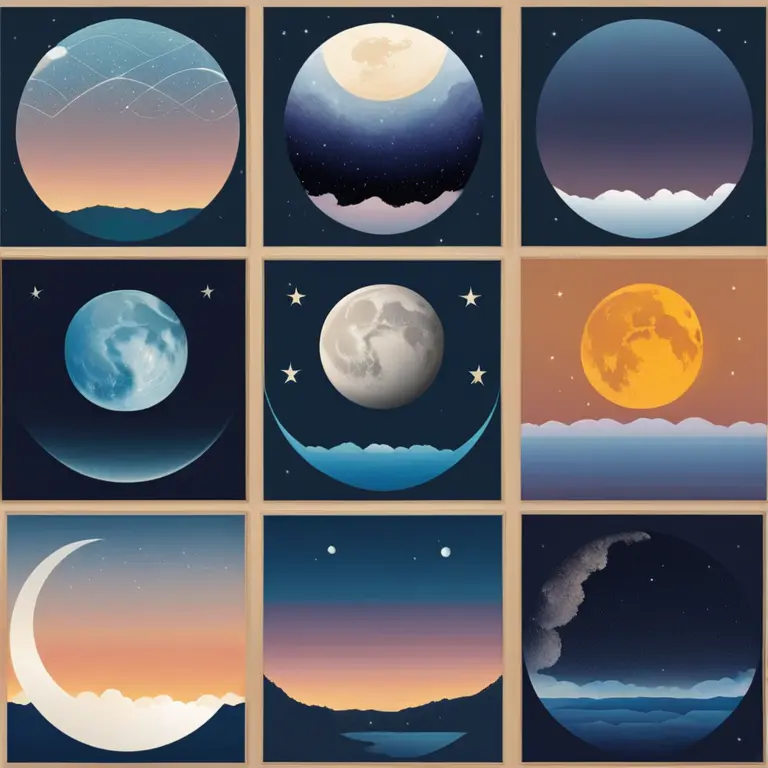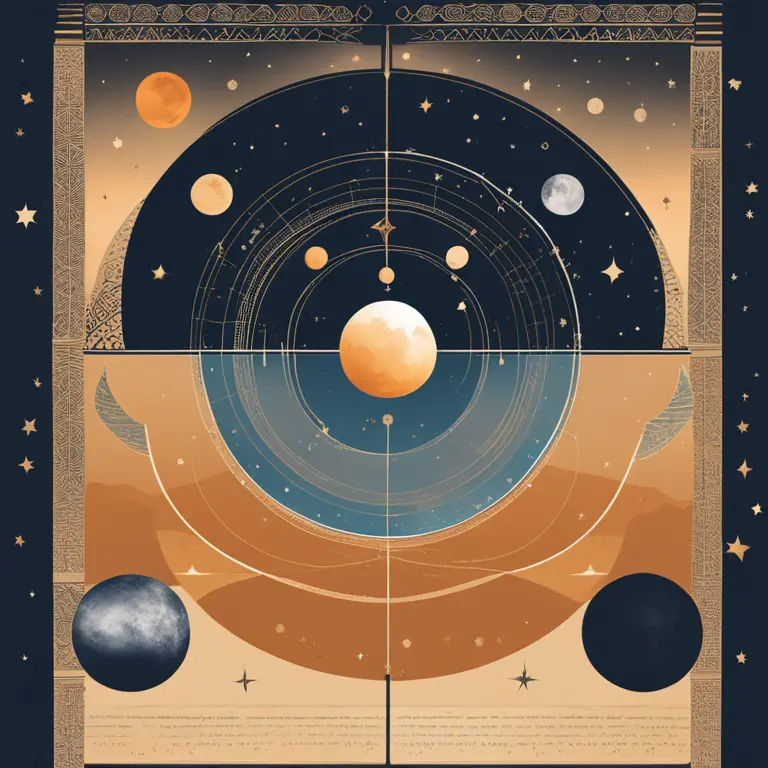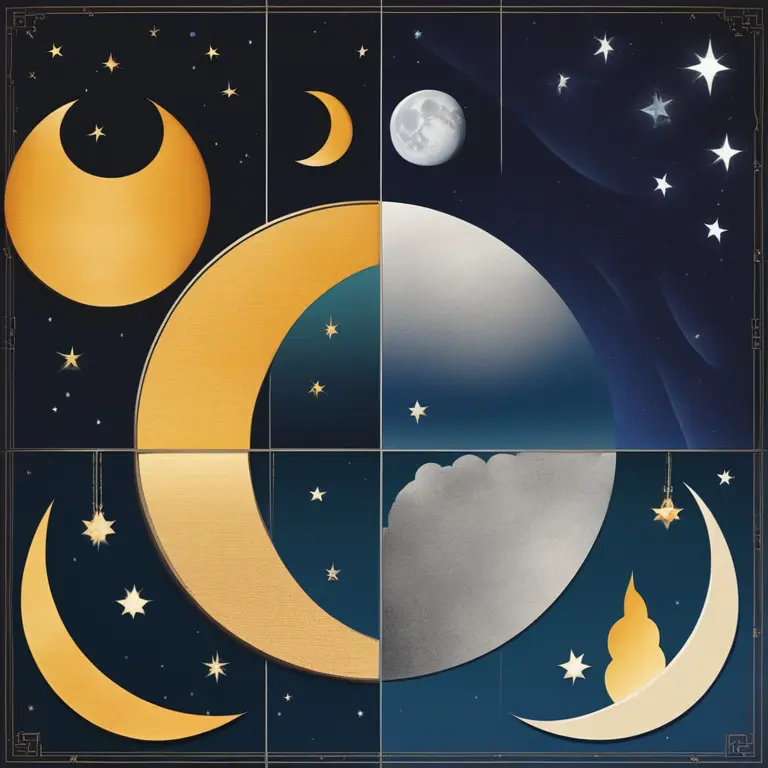
Unlock The Mystique of Moon Phases
Discover the celestial mechanics behind the ever-changing faces of our Moon and how they impact the night sky.
article by Priya Deshmukh
Moon Phases: A Celestial Dance
Our nearest celestial neighbor, the Moon, plays an integral role in the earthly balance, from moderating our planet's wobble to influencing tides. But one of the most visual aspects the Moon offers is its phases. These phases result from a dance between the positions of the Earth, Moon, and Sun, casting shadows and bending sunlight. The Moon revolves around Earth and as it does, sunlight illuminates different portions of its surface that we can see from our vantage point. This is why throughout a month, the Moon appears to transform miraculously from a thin crescent to a full orb and back again.

New Moon to Full Moon: A Journey of Illumination
The journey starts with the New Moon, not visible from Earth as the Moon situates between the Sun and Earth, with its illuminated side facing away from us. As the Moon orbits, a sliver of reflected sunlight becomes visible, heralding the waxing crescent. This progresses to the first quarter, where exactly half of the Moon's face shines. As more of the illuminated side becomes visible, it grows fuller, entering the waxing gibbous phase until reaching the climax of the cycle - the Full Moon. In the night sky of 2024, watch how each Full Moon carries its traditional name, connecting us with the ancient rhythms of time.

The Waning Wisdom
Post Full Moon, the Moon undergoes a waning phase, starting with the waning gibbous. Here, the illuminated portion decreases but is more than half. The next milestone is the last quarter, mirroring the first quarter but with the opposite half lit. Following this is the waning crescent, which diminishes until the Moon vanishes from our sight, transitioning back into the New Moon. Astrologically speaking, each of these stages has been thought to bear specific influences - from starting new projects at the New Moon to reflection and release during the waning period.

Astrological Aspects and Moon Phases
Astrology assigns profound significance to these lunar phases. For instance, in the years following 2024, the waxing Moon is traditionally seen as a time for growth and accumulation. New endeavors are favored, and positive energy accumulates. In contrast, the waning Moon suggests a period of release and introspection, a time for letting go of what no longer serves. The Full Moon often marks a moment of revelation and culmination. Each phase resonates with specific zodiac signs, promising tailored insights in astrological forecasts.

The Ecliptic Enigma and Lunar Lore
The moon’s path along the ecliptic - the plane of Earth’s orbit around the Sun - also influences its phases. This path brings about eclipses when the Earth and Moon align precisely with the Sun during New or Full Moons. Lunar eclipses can only happen at a Full Moon, and solar eclipses at a New Moon. These events are steeped in astrological lore and anticipate significant shifts or epiphanies, both individually and collectively. In the upcoming 2024 lunar eclipses, watch for themes that challenge and transform societal structures.
Connecting the Cosmic Dot
Understanding how moon phases are caused enriches our appreciation of the night sky and our astrological practices. It reminds us that the cosmos is a vast clockwork of interrelated movements and cycles. Each phase of the Moon, in the context of astrology, provides an opportunity for reflection and to align our actions with the broader rhythms of the universe.
Published: 1/19/2024
Modified: 1/19/2024
More predictions
Come back here soon to learn more about yourself and your future


Moon Phases: Romantic Connections & Partnership
Discover how the lunar cycle influences romantic connections and partnership dynamics in life.


The Influence of Your Moon Phase Birth
Discover how the moon phase at your birth affects your personality and life path in this insightful article.


Your Birthday’s Moon Phase & Its Meaning
Discover how the phase of the moon on your birthday influences your life and personality in this insightful astrological analysis.